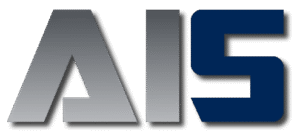Using AI Agents for eDiscovery Early Case Assessment
Early Case Assessment (ECA) sets the tone, scope, and budget for modern litigation and investigations. With data sprawled across email, chat, cloud storage, mobile, and SaaS apps, AI agents can help legal teams quickly clarify issues, estimate costs, identify risks, and organize facts—without sacrificing defensibility. This week, we explore how AI-driven agents and workflows transform ECA, including practical approaches using Microsoft 365, Purview eDiscovery (Premium), and legal-specific AI platforms.
Table of Contents
- What Early Case Assessment Is—and Why AI Agents Matter
- How AI Agents Work in eDiscovery ECA
- Workflow Optimization: An AI-Powered ECA Playbook
- Collaboration with Microsoft 365, Teams, and Copilot
- Selecting the Right Tools: AI eDiscovery Platforms Compared
- Compliance, Security & Risk Mitigation with AI
- Ethical & Regulatory Considerations
- Future Trends in AI-Driven ECA
- Practical Example: Teams + Purview + Copilot ECA in One Afternoon
- Key Takeaways & Next Steps
What Early Case Assessment Is—and Why AI Agents Matter
Early Case Assessment is the disciplined process of rapidly evaluating facts, custodians, data sources, volume, timelines, privilege exposure, and potential liability to inform strategy and budget. Today’s ECA must handle:
- Cloud-first data (Teams, Slack, SharePoint, Google Workspace, Box) and mobile sources
- Complex communication patterns across email, chat, and documents
- Rapid litigation holds, scoping, and preservation obligations
AI agents accelerate ECA by executing targeted, defensible tasks: identifying relevant custodians, clustering topics, extracting entities and timelines, flagging potential privilege or PII, and drafting structured ECA briefs for human review. Properly governed, these agents reduce time-to-insight from weeks to hours while improving quality and consistency.
Best practice: Treat AI agent outputs as decision-support, not final determinations. Require human validation, maintain full audit logs, document sampling and QC, and preserve the ability to explain process choices to the court or regulator.
How AI Agents Work in eDiscovery ECA
Agentic workflows are coordinated sets of specialized services that operate under policy constraints, with human-in-the-loop validation. A defensible ECA agent framework typically includes:
- Ingestion & connectors: Secure, read-only connectors to enterprise sources (e.g., Microsoft 365, Slack exports, Box, on-prem file shares). Chain-of-custody and hashing should be standard.
- Pre-processing: De-duplication, near-duplicate detection, email threading, OCR, language detection, and metadata normalization.
- Analytic services: Topic modeling, concept clustering, communication maps, sentiment signals, entity extraction (people, companies, domains), and timeline reconstruction.
- Policy-aware agents: Agents scoped by matter rules. Examples: a “Privilege Scout” that flags potential attorney names/domains and legal terms; a “PII Guard” for sensitive data; an “Issue Mapper” that groups documents by alleged misconduct or contract clause.
- Summarization & briefing: Structured ECA briefs with source citations, volume estimates, key custodians, topic clusters, date ranges, and preliminary risk considerations.
- Controls: Access control, redaction services, secure enclaves for model inference, logging, and export governance.
Agentic ECA Workflow (High-Level)
- Scope definition (claims, issues, date ranges, custodians)
- Legal hold and data source inventory
- Secure ingestion and pre-processing
- AI analytics (clustering, timelines, comms analysis, PII/privilege flags)
- Draft ECA brief with citations and metrics
- Human QC (sampling, validation, challenge review)
- Finalize strategy, cost model, and next steps (in-place cull or export)
Workflow Optimization: An AI-Powered ECA Playbook
Use the following playbook to standardize and accelerate defensible ECA while improving collaboration and cost predictability.
1) Define the scope and questions
- Frame core issues: claims/defenses, key events, jurisdictions.
- Identify likely custodians and systems (email, Teams, SharePoint, mobile). Document scoping rationale.
- Decide on culling strategies (date ranges, keywords, concept search).
2) Preserve and inventory sources
- Apply legal holds and in-place preservation for relevant systems.
- Generate a living data map listing repositories, custodians, and preservation status.
3) Pre-process for speed and defensibility
- De-duplication, near-duplicate analysis, email threading, language/OCR.
- Log all operations; keep hashes and chain-of-custody metadata.
4) Run targeted agent analytics
- Topic clusters and themes to surface hot issues early.
- Entity and domain extraction to confirm the cast of characters.
- Communication mapping to reveal hubs, spikes, and off-hours activity.
- Privilege candidate detection using attorney domains and legal terminology.
- PII detection for redaction planning and cross-border transfer analysis.
5) Produce an ECA brief with metrics
- Volume estimates, culling impact percentages, and cost forecasts.
- Timeline of key events with document exemplars and link-back to sources.
- Candidate search terms and concept exemplars for iterative refinement.
6) Validate and document
- Human sampling and QC; record acceptance criteria and exceptions.
- Maintain an ECA decision log for potential Rule 26(f) discussions.
7) Decide next steps
- Proceed in-place for additional culling, export to a review platform, or negotiate scope with opposing counsel based on data-informed insights.
Collaboration with Microsoft 365, Teams, and Copilot
Law firms and legal departments embedded in Microsoft 365 can unify collaboration and compliance while accelerating ECA:
- Microsoft Purview eDiscovery (Premium): Issue holds; run targeted collections across Exchange, OneDrive, SharePoint, and Teams; perform analytics (threading, near-duplicates, themes); cull and export to review platforms. Ideal for in-place ECA on M365 data.
- Teams + SharePoint: Create matter-specific channels and a secure SharePoint case site for ECA outputs, decision logs, and stakeholder updates.
- Copilot for Microsoft 365: Summarize meetings, draft internal memos from structured outputs, and accelerate administrative tasks. Use with tenant safeguards; it’s not a replacement for a review platform.
- Power Automate and Power Platform: Orchestrate repeatable ECA steps (e.g., trigger analytics on collection completion; route drafts for approval; file final briefs).
Note: For non-Microsoft sources, use native exports, vendor connectors, or APIs. Keep ingestion defensible and logged; avoid uncontrolled copies.
Selecting the Right Tools: AI eDiscovery Platforms Compared
Match your matters, data footprint, and risk profile to the right combination of platforms. The table below summarizes common options for AI-augmented ECA:
| Platform | Primary Strengths for ECA | Notable AI/Analytics Capabilities | Best For |
|---|---|---|---|
| RelativityOne | End-to-end eDiscovery with robust Active Learning and analytics | Concept search, clustering, Active Learning (TAR), email threading, near-duplicates, name normalization | Complex matters; large volumes; mature review teams |
| Reveal (with Brainspace) | Powerful visual analytics and investigation workflows | Concept clustering, communication network analysis, sentiment signals, timeline visualizations | Investigations and rapid hypothesis testing |
| DISCO | Cloud-native speed with streamlined ECA and review | AI-assisted tagging, search acceleration, automation for review workflows | Lean teams needing fast starts |
| Everlaw | Collaborative case building with intuitive analytics | Clustering, predictive coding, narrative tools (e.g., StoryBuilder) | Teams emphasizing collaboration and storytelling |
| Microsoft Purview eDiscovery (Premium) | In-place preservation, collection, and culling for Microsoft 365 | Legal hold, targeted search, threading, near-duplicate detection, analytics dashboards | Early scoping of M365 data before export to review |
| Custom (Azure OpenAI + secure data lake) | Tailored agents and private deployment | Entity extraction, summarization, topic modeling via private LLMs; governance under your tenant | Innovation labs or specialized use cases with IT support |
Tip: Many teams combine Microsoft Purview for preservation and in-place ECA with a dedicated review platform for downstream workflows.
Compliance, Security & Risk Mitigation with AI
AI will not save a weak process. Strengthen governance first, then automate. Use the matrix below to operationalize defensibility:
| Control Area | What It Means for ECA | What to Verify |
|---|---|---|
| Legal Hold & Preservation | Custodians and sources are preserved in-place before analysis | Hold issuance, acknowledgement tracking, preservation scope logs |
| Access Control | Least privilege for AI agents, reviewers, and admins | Role-based access, conditional access, MFA, just-in-time access |
| Auditability | Explainable workflow for court/regulator scrutiny | Immutable logs of searches, exports, AI runs, and human approvals |
| Data Protection | Encryption at rest/in transit; secure inference; DLP | Key management, tenant isolation, redaction policies, DLP rules |
| Privacy & PII | Minimize exposure; plan redaction early | PII detection accuracy, retention policies, cross-border transfer controls |
| Model Governance | Assess and monitor AI behavior over time | NIST AI RMF-aligned risk assessments; evaluation sets; drift monitoring |
Use vendor attestations and certifications (e.g., SOC 2 Type II, ISO 27001) as inputs, not substitutes, for your own due diligence. Confirm where data is processed, which models are used, and whether your data is excluded from model training.
Ethical & Regulatory Considerations
- Defensibility & transparency: Document your workflows, agent configurations, and QC. Be prepared to explain why you chose certain culling strategies.
- TAR and proportionality: Align with evolving case law and professional guidelines; meet obligations under FRCP 26 and 34, and protect against sanctions under Rule 37(e).
- Privilege protection: Use layered detection (attorney domains, legal language) and human validation. Consider privilege logs augmented by AI but certified by counsel.
- Bias and hallucinations: Require sampling and cross-checks. Do not rely on AI for final factual conclusions; use it to prioritize and hypothesize.
- Client consent and communication: If using AI materially affects representation or cost, explain its role and oversight to clients.
Ethical insight: The duty of competence includes understanding benefits and risks of relevant technology. Demonstrable governance and validation will matter as much as the choice of tools.
Future Trends in AI-Driven ECA
- Multi-agent systems: Coordinated agents handling holds, collection, analytics, and briefing while enforcing policy constraints.
- Integrated chat and audio analysis: Voice and video transcription plus conversation intent detection feeding investigations.
- Privacy-preserving AI: On-tenant LLMs, secure enclaves, and differential privacy techniques for sensitive matters.
- Continuous ECA: Always-on posture for investigations and hotline triage, shortening time from incident to insight.
- Stronger explainability: Citations, source-linked summaries, and built-in evaluation reports to support meet-and-confer.
Practical Example: Teams + Purview + Copilot ECA in One Afternoon
This example demonstrates an internal, defensible ECA path using Microsoft 365, with the option to export to a review platform for later phases. It assumes you have Microsoft Purview eDiscovery (Premium) and Copilot for Microsoft 365 enabled, and that your organization permits private use of Azure OpenAI or a similar tenant-controlled service for summarization.
Goal
In 3–4 hours, produce an ECA brief that identifies key custodians, top issues, date ranges, data volume, and initial risk flags (privilege, PII), with links back to source data and QC notes.
Steps
- Create the matter workspace: In Teams, create a private channel “Matter-ECA.” In SharePoint (linked site), add folders for “Data Map,” “ECA Brief,” and “QC Logs.”
- Preserve and scope in Purview: Open Purview eDiscovery (Premium), create a case, and:
- Issue holds for target custodians in Exchange, OneDrive, and Teams.
- Run targeted searches by date range and known terms; record queries in the case log.
- Apply analytics (threading, near-duplicates) and note culling impact.
- Export metadata for analysis: Export a metadata-only set (CSV/JSON) with document IDs, custodians, paths, dates, threads, and any tags, to the SharePoint “Data Map” folder.
- Run a private AI enrichment job: Use Power Automate to trigger a secured Azure Function (or similar) that:
- Reads the exported metadata and, where permissible, short text snippets.
- Performs entity extraction (people, domains), topic clustering labels, and flags potential privilege terms/attorney domains.
- Writes results back to SharePoint as “enrichment.csv” with confidence scores and references to source IDs.
Ensure the model runs in your tenant boundary with no data used for training, and log parameters and outputs for audit.
- Draft the ECA brief with Copilot: In Word, open a template in the “ECA Brief” folder and use Copilot to assemble a first draft from “enrichment.csv,” analytics dashboards (screenshots permissible), and the data map. Example prompt for your private tenant-protected Copilot:
“Using the files in the Matter-ECA SharePoint site, draft a 3-page Early Case Assessment summary. Include: (1) key custodians and communication hubs; (2) top five themes with exemplar document IDs; (3) date range concentration; (4) culling statistics from Purview analytics; (5) privilege/PII flags; (6) recommended next steps and estimated review volumes. Provide citations to source files and IDs.” - QC and finalize: Assign two reviewers to sample 50–100 items per high-confidence theme and validate privilege/PII flags. Record QC findings in “QC Logs” and update the brief. Export a minimal, defensible set to your review platform if proceeding.
Result: A defensible, source-linked ECA brief that informs strategy, supports meet-and-confer, and accelerates downstream review—produced with consistent process controls, not ad hoc effort.
Key Takeaways & Next Steps
AI agents can reduce ECA timelines from weeks to hours while improving accuracy, transparency, and collaboration. Success requires more than tools—it requires policy-aware workflows, tenant-secure AI, rigorous validation, and clear documentation. Start with data you already control (e.g., Microsoft 365), pilot with a narrow scope, and measure culling impact and time savings. A defensible, repeatable ECA program will pay dividends across matters and negotiations.
Want expert guidance on improving your legal practice operations with modern tools and strategies? Reach out to A.I. Solutions today for tailored support and training.





